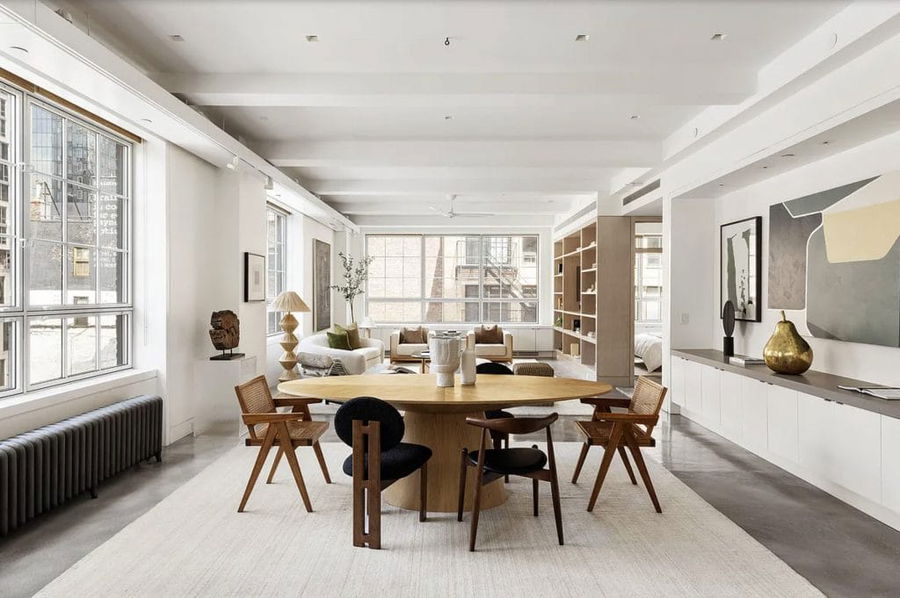
Ever wondered how to get the right balance of wood tones in your home? Whether decorating a cozy living room or updating your bedroom, thoughtfully mixing wood tones can bring depth, contrast, and style to your spaces. Let’s explore how you can mix different wood finishes to create a visually stunning and balanced design.
Why Mixing Wood Tones Works Wonders
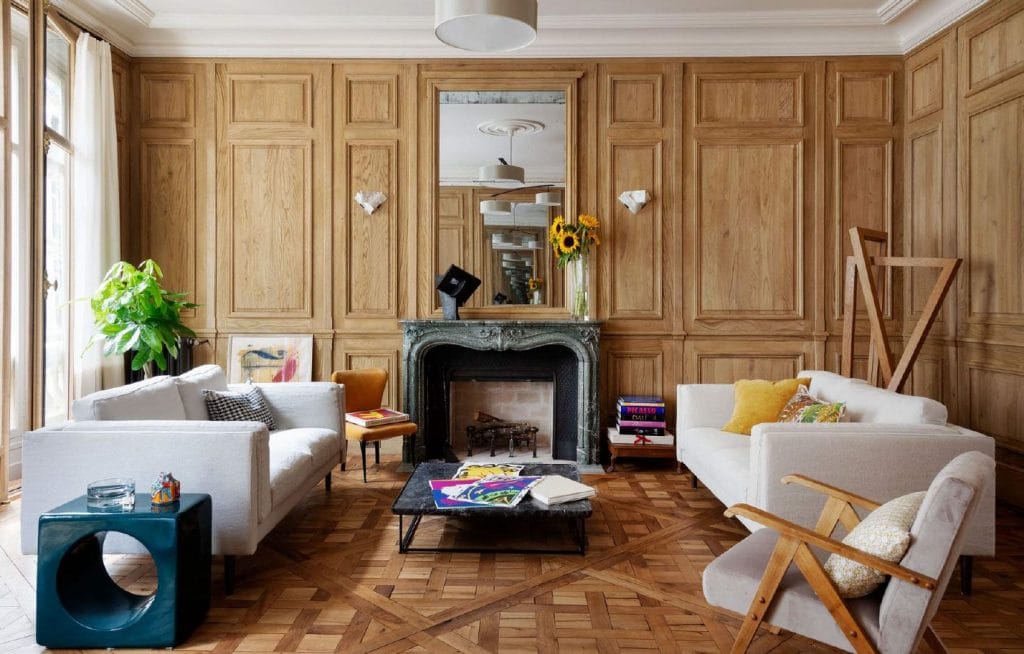
When it comes to selecting wood tones, it is all about balance. Mixing different woods can enhance the aesthetic of a room, but it needs to be done with intention. Here is why incorporating various wood tones into your tailored interior design is a great idea:
- Creates Visual Interest: Combining wood tones in a room instantly adds character and depth. It helps avoid a flat, monotonous look and draws the eye upward.
- Improves Room Proportions: Darker woods can make large rooms feel cozier, while lighter woods can add height and openness to smaller spaces.
- Reflects Your Style: Mixing wood tones is a great way to reflect your personal style. Whether you prefer rustic, modern, or eclectic designs, the right wood combination can bring your vision to life.
- Simple Yet Dramatic: Changing up your ceiling or adding a wood feature wall can make a big impact without the need for major renovations. It is a quick and stylish way to refresh your space.
- Adds Architectural Appeal: Mixing wood tones in living room spaces introduces a sense of depth and interest. It makes the room feel more complete and tastefully designed.
Pro Tip: Need style direction beyond mixing wood tones in your home? Try our Free Interior Design Style Quiz to discover your ideal style today!
Designer Tips to Master Mixing Wood Tones

Ready to bring a designer touch to your home? Mixing wood tones does not need to be overwhelming. Follow these expert tips and tricks to create a beautifully layered natural look in any room.
1. Start with a Neutral Canvas
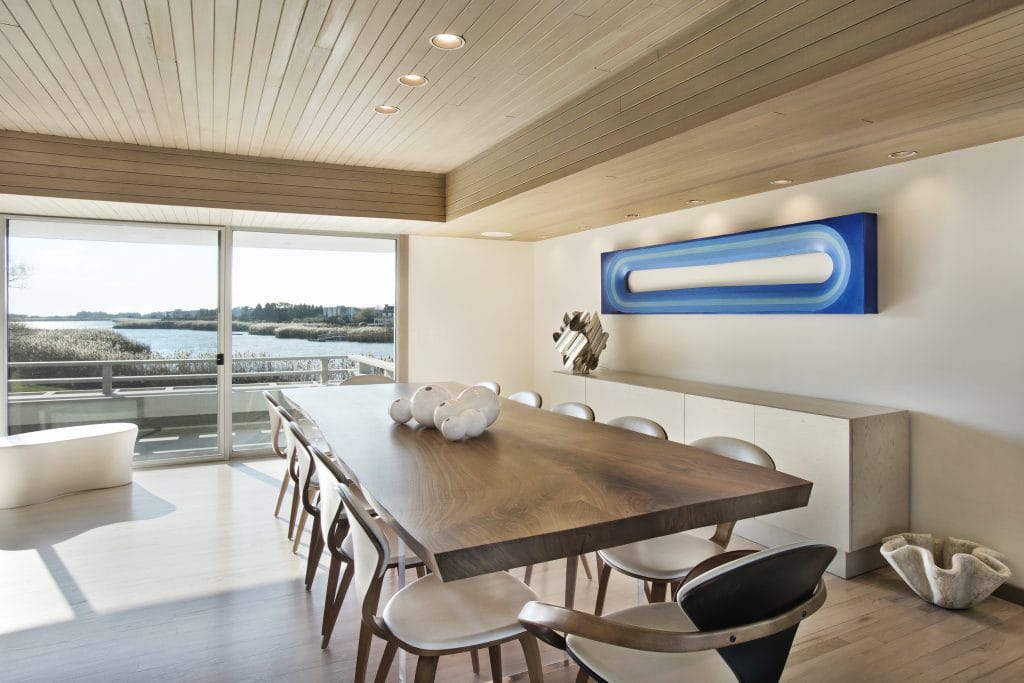
Begin by establishing a neutral foundation. A neutral wall color or floor can act as a subtle backdrop, allowing the different wood tones to stand out. A calm base will provide the perfect stage for mixing wood tones that complement each other.
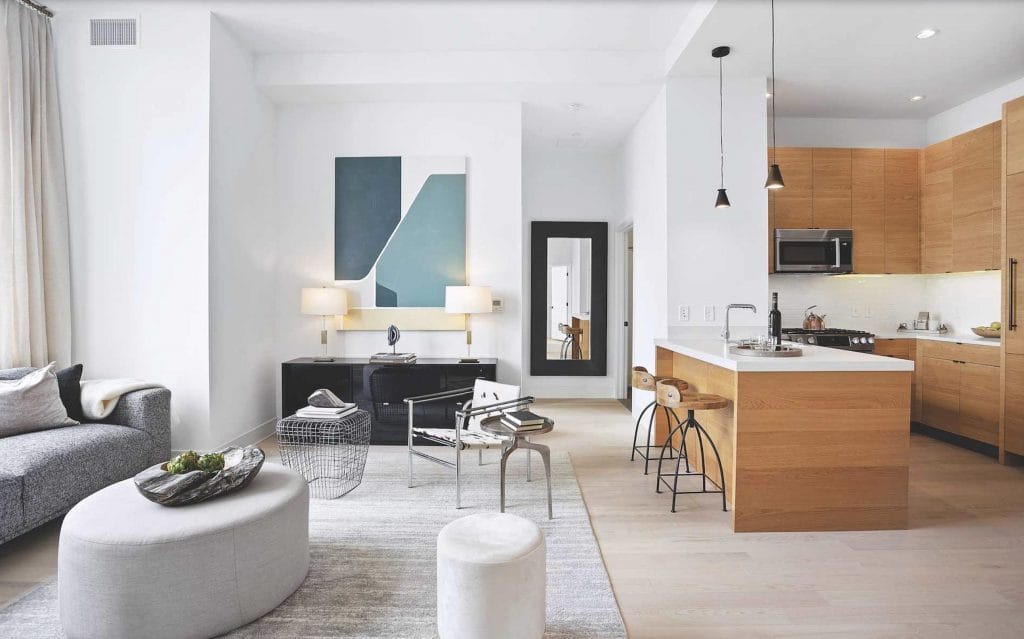
Think light beige walls or white floors that work harmoniously with a variety of wood colors and finishes. This is especially helpful when mixing warm and cool wood tones in one space.
2. Contrast Light and Dark Woods
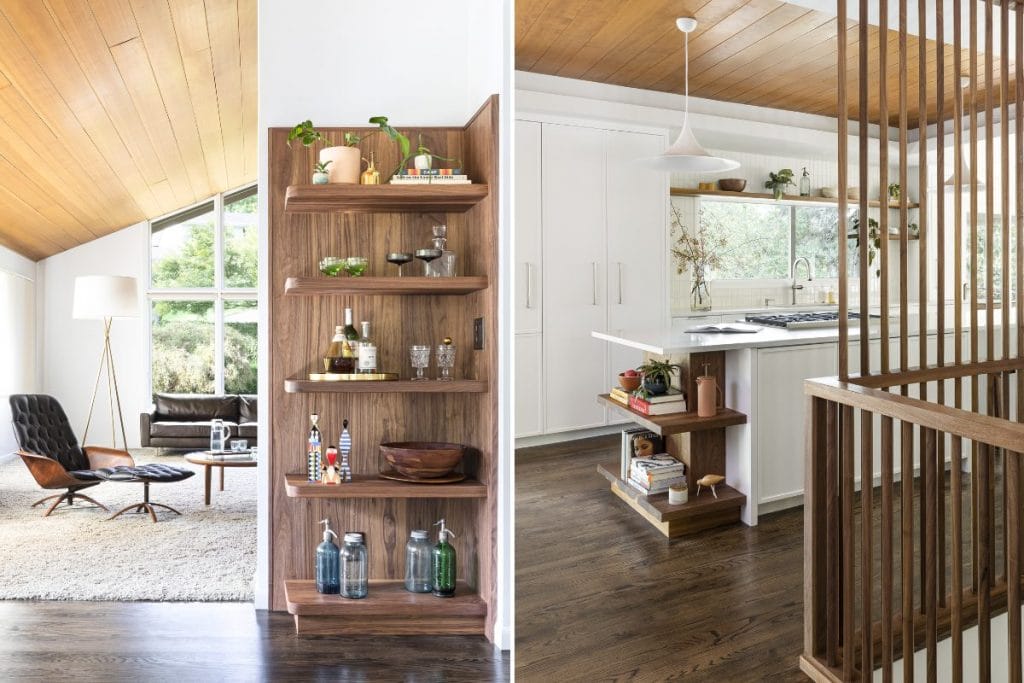
One of the simplest ways to mix wood tones is by mixing light and dark wood. Darker woods, such as walnut or mahogany, add richness and depth to the room, while lighter woods like oak or maple help balance things out.
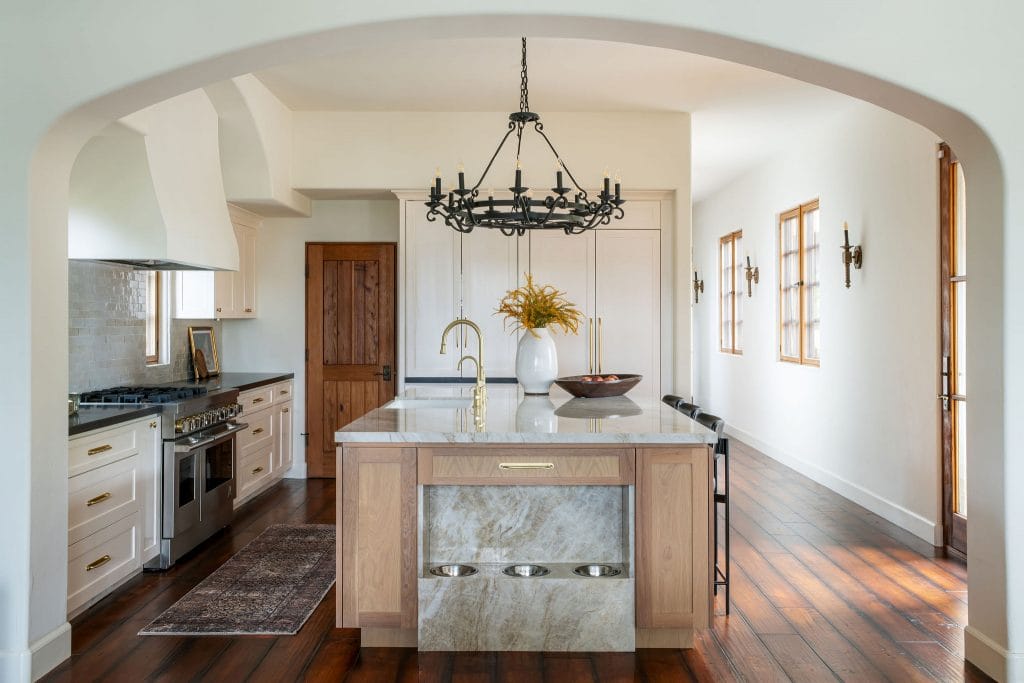
Pair a dark wood dining table with light wood chairs to create a perfect visual contrast. To prevent the space from feeling too high-contrast or disjointed, you can balance light and dark wood pieces with mid-tone wood as a buffer element.
3. Let Accents Shine with Small Pieces
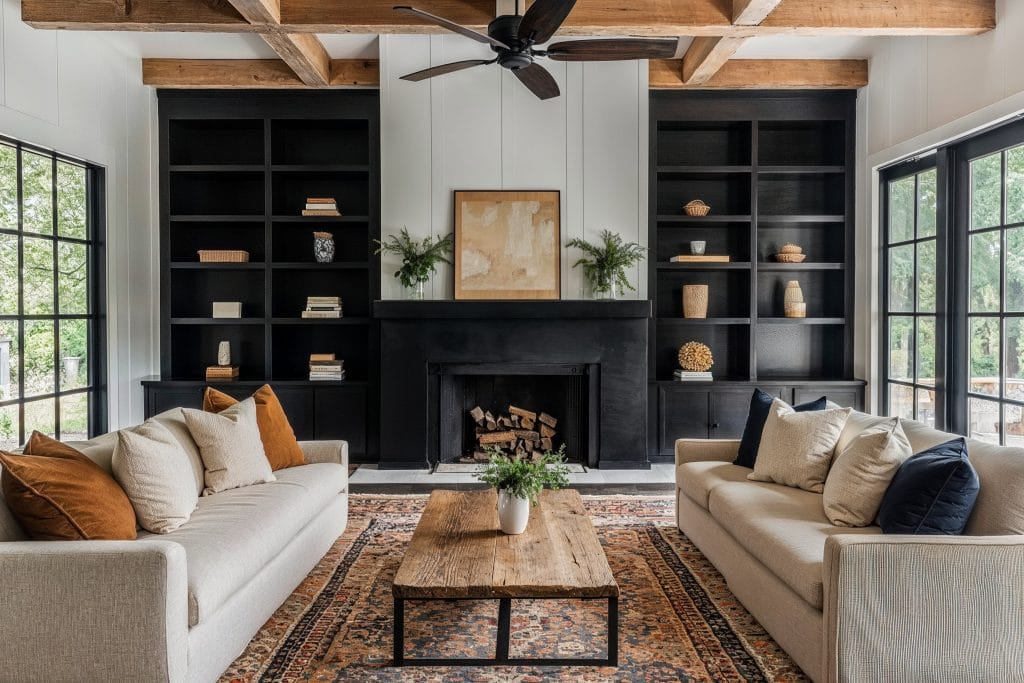
Not sure about going all in with bold wood tones? Start with small pieces. Mixing wood furniture with white is an easy way to introduce contrasting wood elements in a subtle yet stylish way. A wooden coffee table and white chairs can work perfectly together with a tall black wooden built-in shelf, for example.
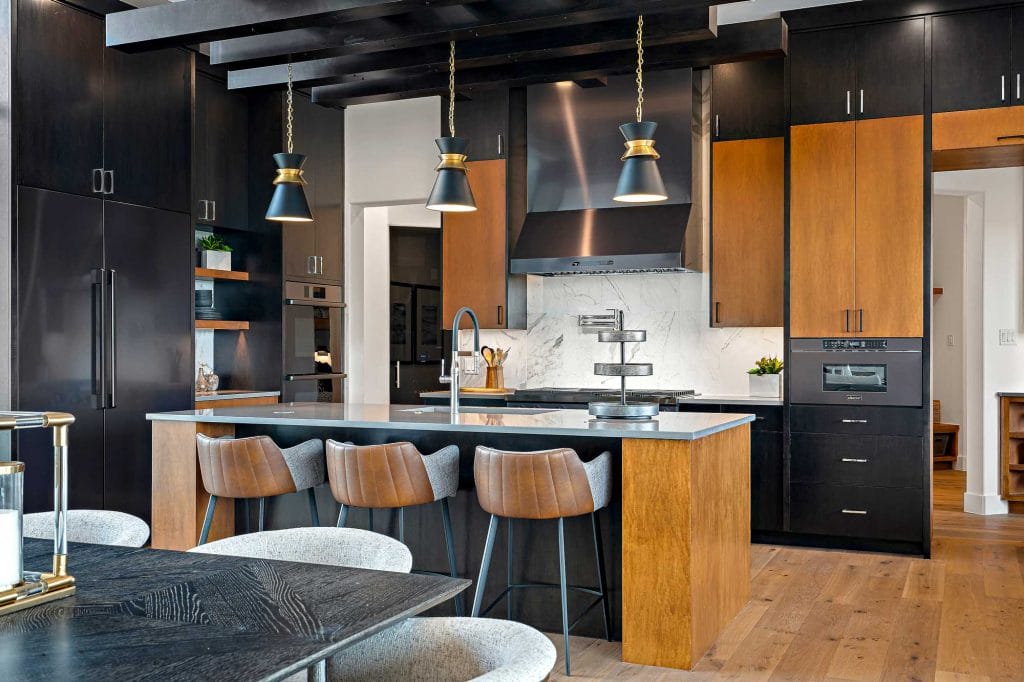
Instead of mixing accents randomly, repeat wood tones in different parts of the room for a cohesive look. In a mixed wood kitchen, for instance, you can repeat mid-tone wood in both the kitchen island and shelving to connect the dots.
4. Mixing Wood Furniture with Upholstered Pieces
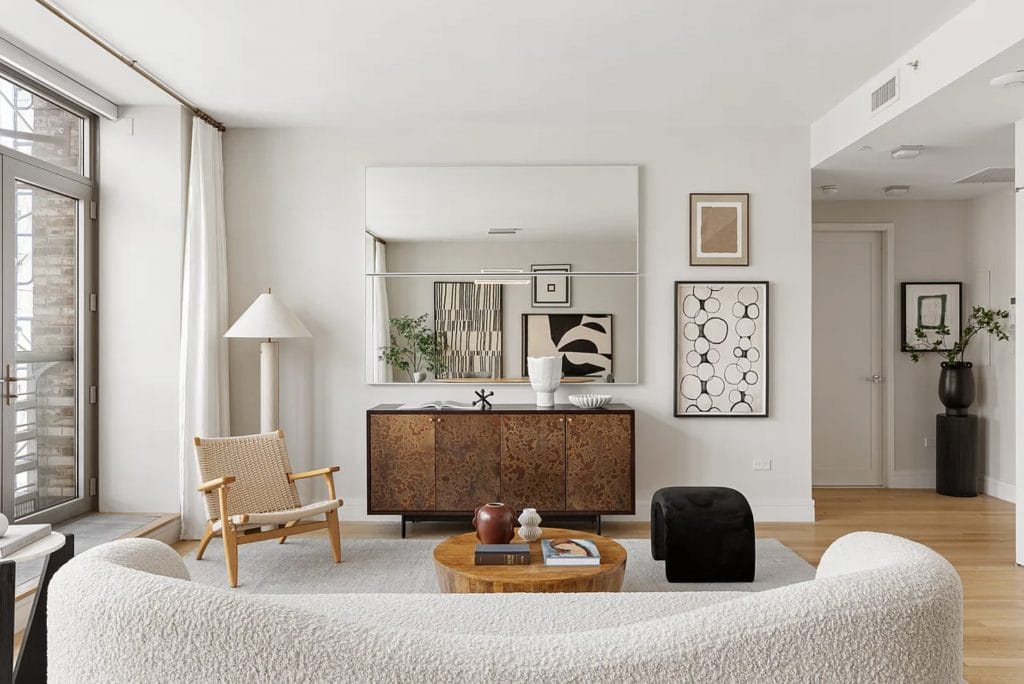
Sometimes, the best way to curate different wood tones that go together is through supporting elements. Pairing wood pieces with complementing upholstery is a great way to introduce texture and soften the look.
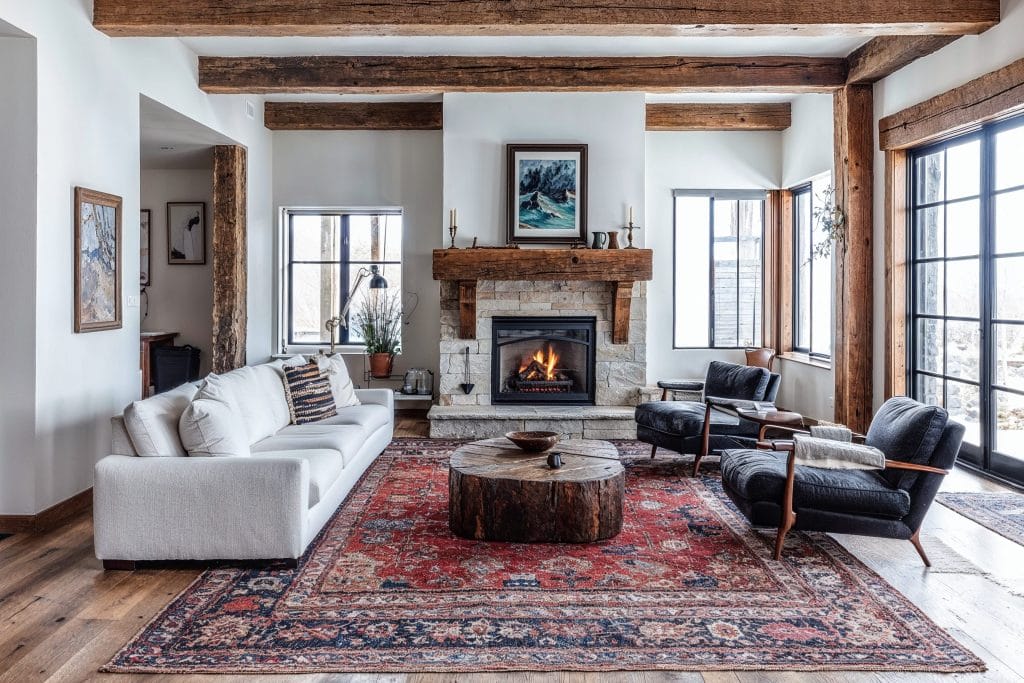
Think throw pillows, curtains, and rugs in tones that echo your wood pieces. These extras can blend the different tones, making your space feel pulled together. For instance, a patterned rug can include shades from both your organic coffee table and your wooden floors in a mixed wood living room.
5. Use Finishes and Textures to Your Advantage
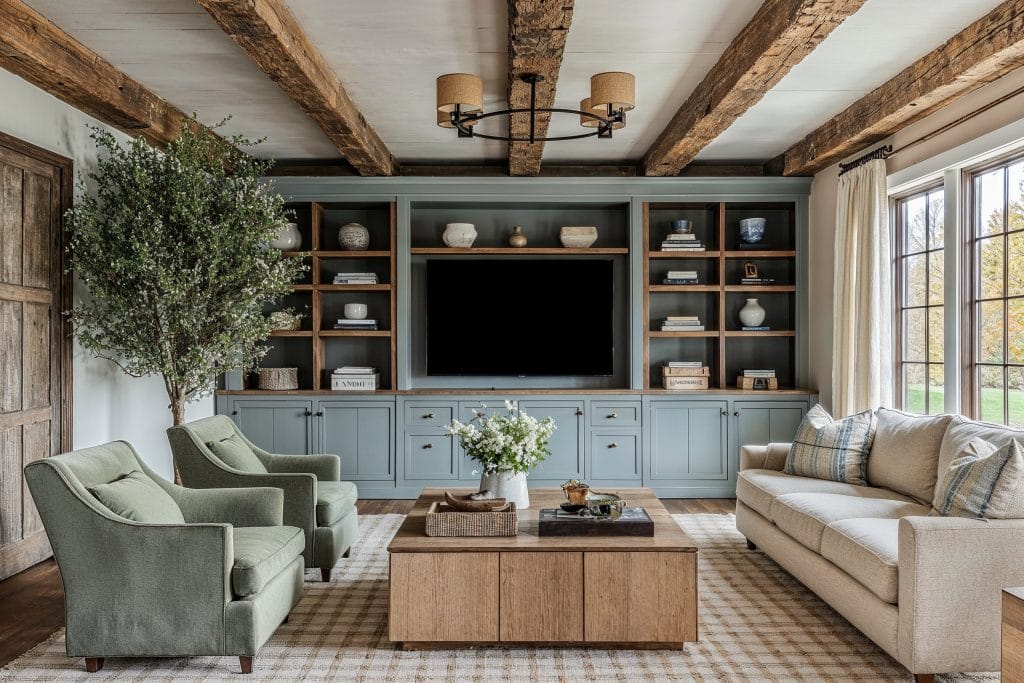
Mixing wood tones is not just about color. The finishes and textures matter too. When you cannot find wood tones that go together seamlessly, vary the texture and finishes instead. A smooth wooden coffee table in a room with reclaimed wood beams feels intentionally different, not mismatched.
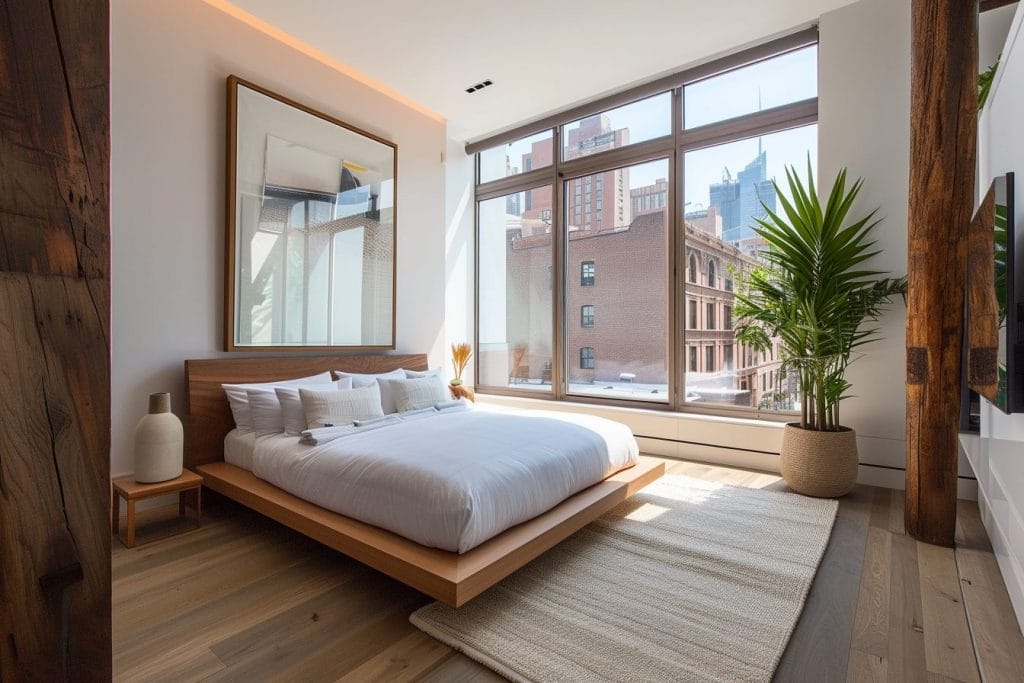
Texture tricks the eye and creates layers of visual interest. You can mix matte, glossy, or distressed finishes to create a rich and layered look. If you are mixing woods in a bedroom, for example, go for a smooth headboard and rough-hewn wooden accents in the room.
6. Add Metal Accents for Balance
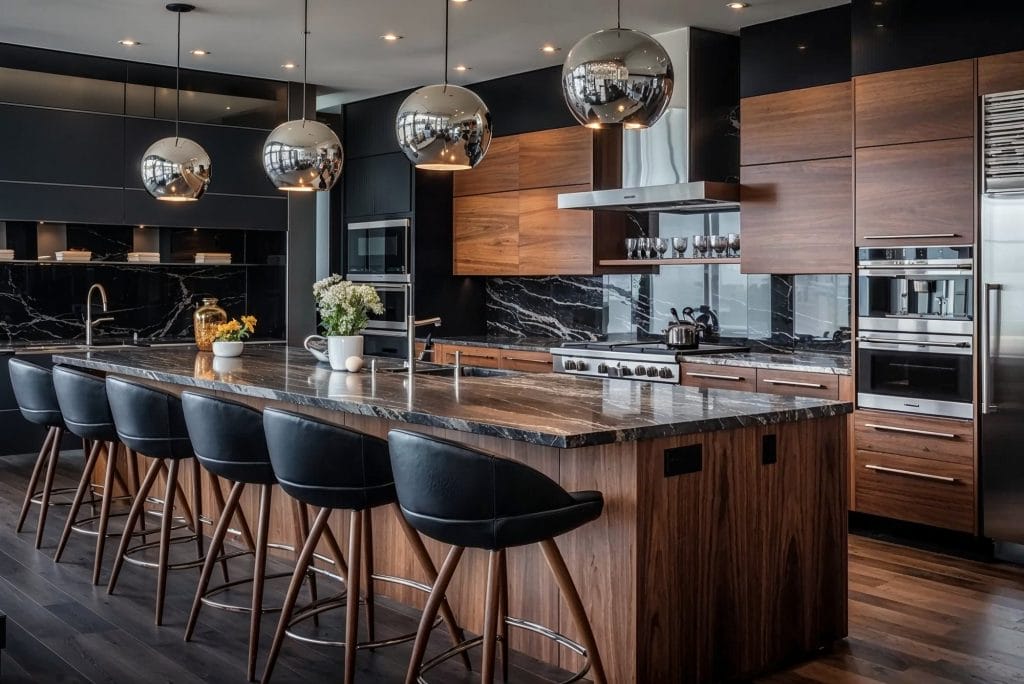
To keep things grounded, consider introducing metal accents. Brass or chrome light fixtures or hardware contrast beautifully with wood, adding a touch of modernity to the natural feel of the wood.
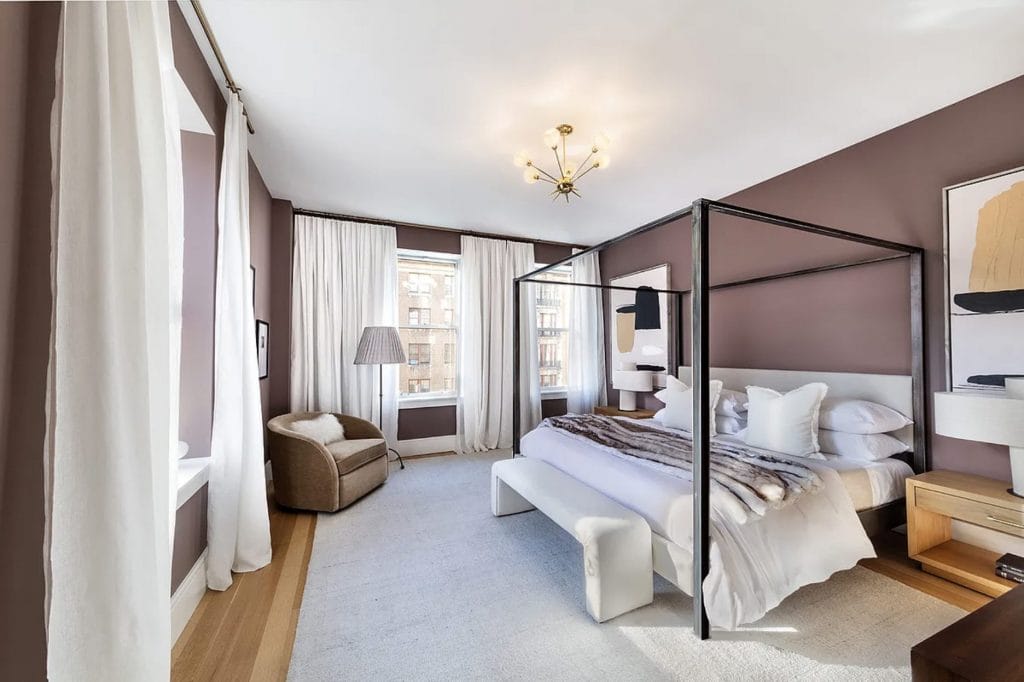
Whether in metal-framed furniture, light fixtures, or decor accents, metal can help unify the warm and cool wood tones, tying everything together in a stylish way.
7. Accent Walls for Extra Drama
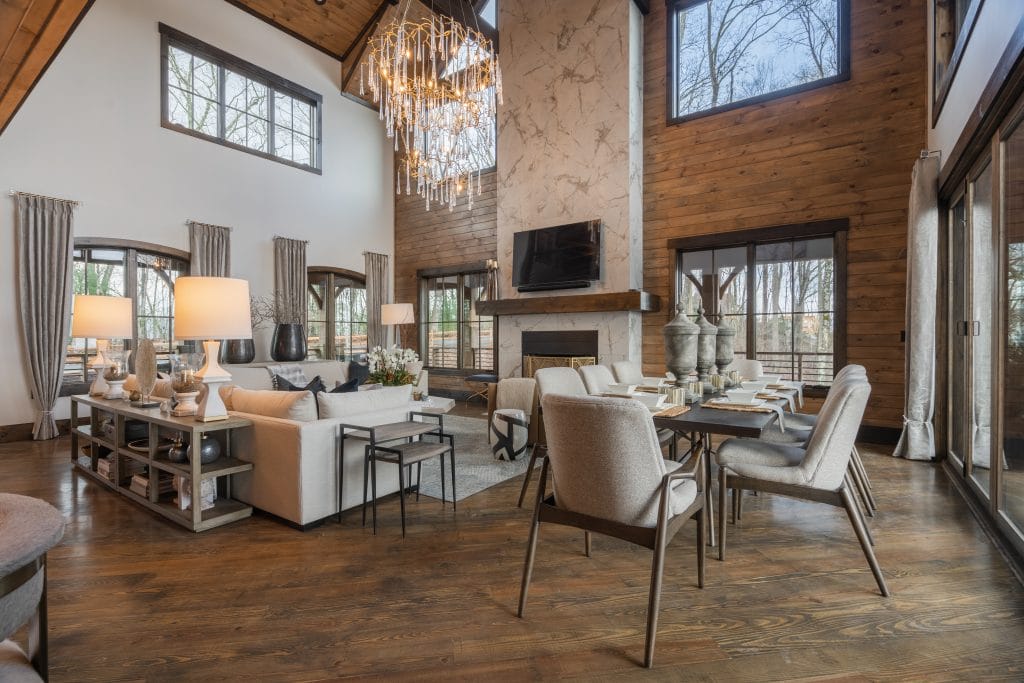
Want to make a statement? Consider creating an accent wall with wood. From a wood-panel accent wall to a wood-slat feature wall, this bold design element brings attention to the focal points of your room.
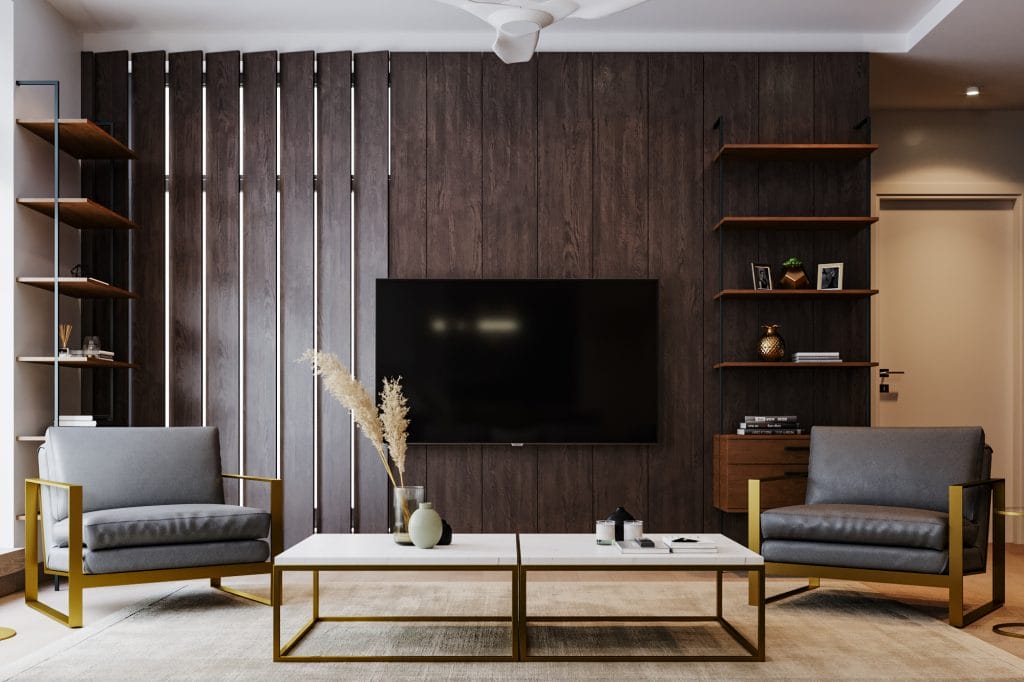
Combining different wood tones on an accent wall gives your mixed-wood living room a curated, well-thought-out vibe. Either use varying shades within the wall itself or offset the wall with shelving or decor in another tone.
8. Stick to 2-3 Wood Tones that Go Together
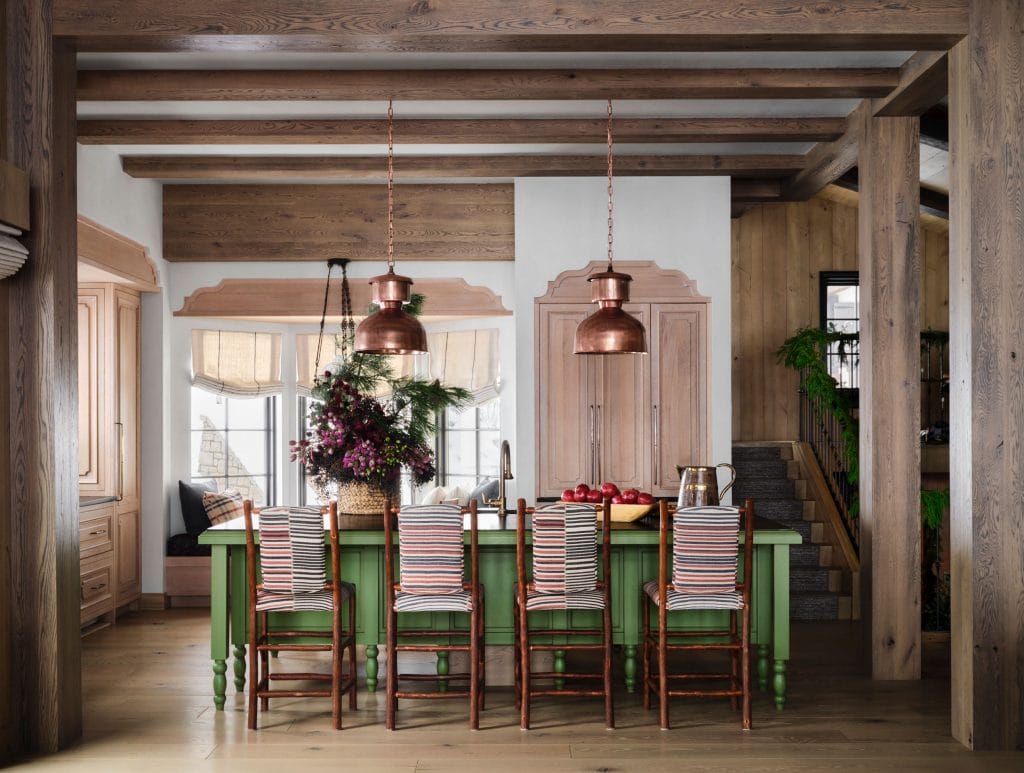
While it is tempting to add all the wood tones you love, keep it simple. Too many wood finishes can overwhelm the eye. Stick to 2–3 tones throughout one space for a cleaner, more elegant look.
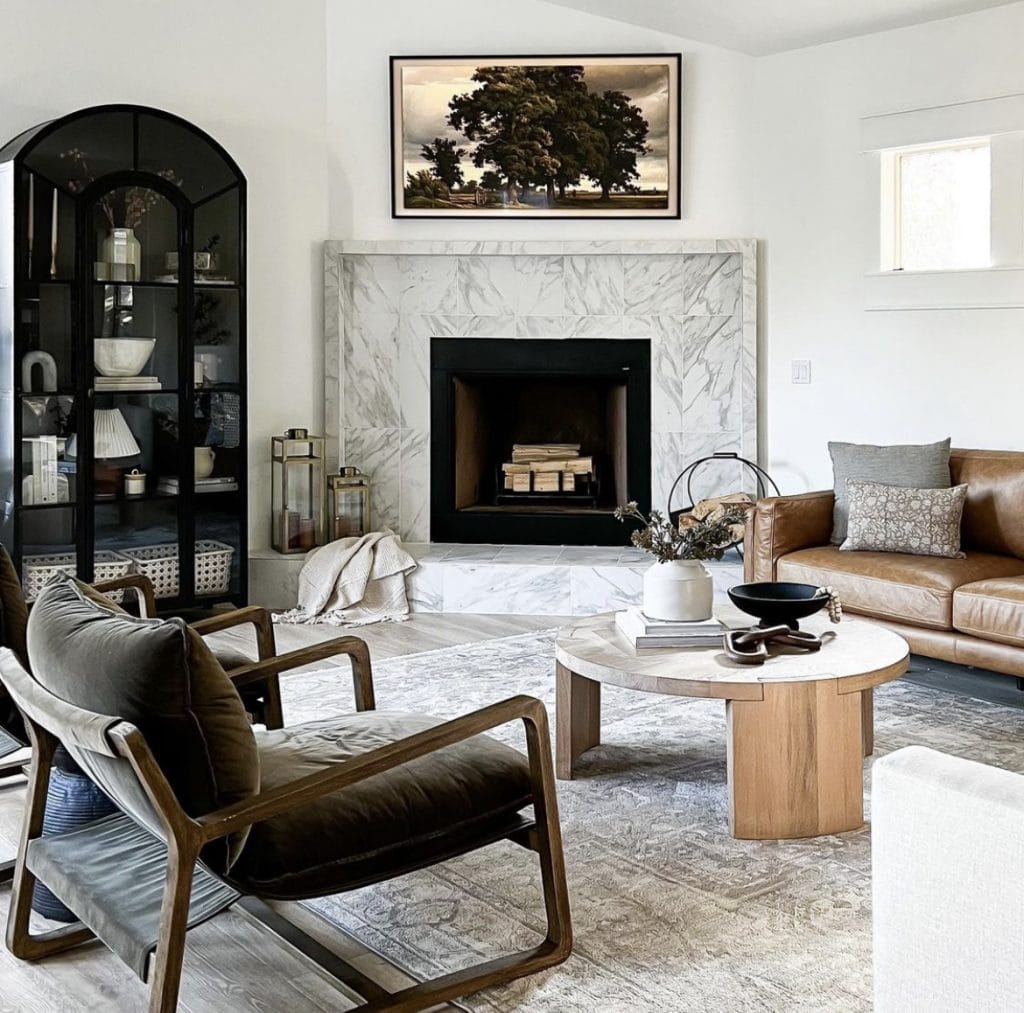
Set the tone with a dominant wood of choice on your floor or large furniture piece to anchor the room. Incorporate the second tone in your accent furniture and an additional decorative wood tone merely as a detail in art frames or shelves. Try sticking to the same undertone throughout your design, whether warm or cool, regardless of the color of the wood.
Need help mixing wood tones in your space?
Work with an expert designer to create a balanced, visually exciting look. Schedule a Free Online Interior Design Consultation to get started today!










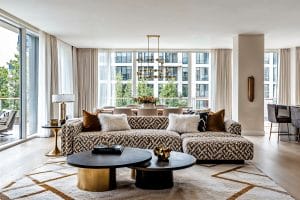
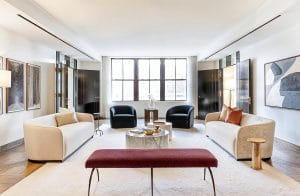
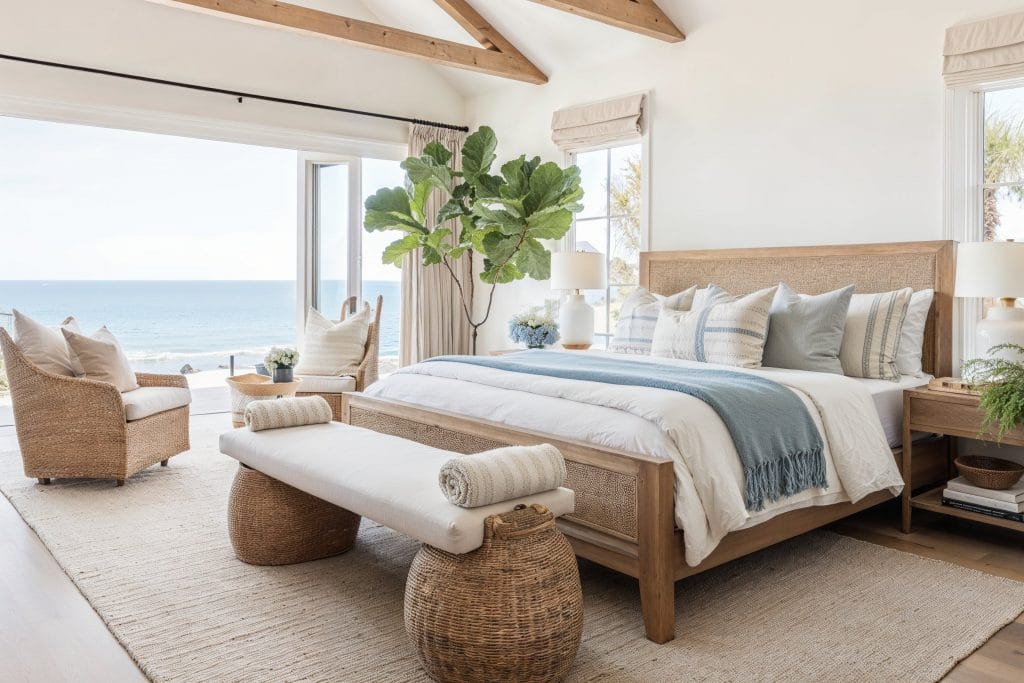
Comments